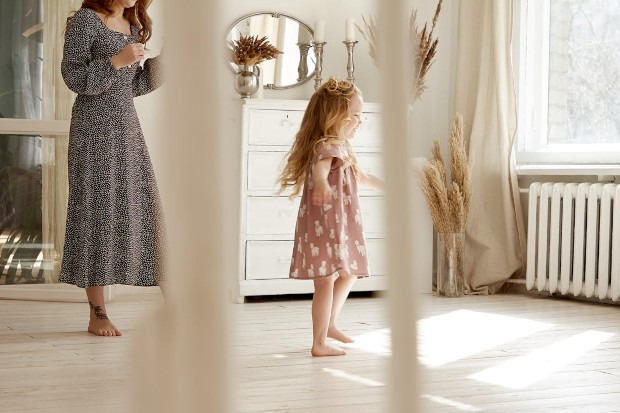Why Kids’ Posture Problems Are Rising (And What You Can Do About It)

Why Kids’ Posture Problems Are Rising (And What You Can Do About It)
You’ve probably noticed it — your child slouched over their tablet, hunched under a too-big school bag, or complaining about an achy back after a day at school. If you’ve wondered whether posture problems in children are becoming more common, the short answer is: yes, they are.
Let’s break it down: what’s causing it, what signs to look for, and how to help your child feel strong, supported, and pain-free.
Is Poor Posture in Kids Really on the Rise?
And it’s not just you noticing. Across the UK, health professionals are seeing more young children struggling with postural issues once only expected in adults. In fact, a recent survey by the British Chiropractic Association (BCA)* found that 68% of chiropractors have seen an increase in children with issues linked to screen time over the past five years. Today’s lifestyles are far more sedentary than they were a generation ago. With more screen time, less outdoor play, heavier school bags, and unsupportive shoes, it’s no wonder children’s growing bodies are under strain.
But with awareness and a few tweaks, there’s a lot we can do to turn things around.

What’s Causing Posture Problems in Kids?
Too Much Screen Time
Children often spend hours sitting in the same position while using devices. Tablets and phones are especially problematic because they’re usually held low, encouraging a forward head posture and rounded shoulders.
Heavy or One-Strap School Bags
It’s not uncommon to see kids lugging oversized backpacks filled with books, water bottles, PE kits, and more. NHS advice suggests bags shouldn’t exceed 10% of a child’s body weight — but many do, especially when worn over one shoulder.
Not Enough Movement
Modern routines — school days, homework, and digital entertainment — mean many children are sitting for six or more hours a day. That lack of movement weakens the muscles that support good posture.
Unsupportive or Ill-Fitting Shoes
Flat soles, worn-out trainers, or second-hand shoes that don’t fit quite right can affect the way children walk, stand, and even sit. Over time, this can have a knock-on effect on posture.
We Just Don’t Think About It Enough
As parents, we’re juggling a lot — and posture isn’t always top of mind. Plus, many of us weren’t taught about posture growing up, so we’re learning alongside our children.

How Can I Spot Posture Issues Early?
Children won’t always tell you something feels “off” — especially if discomfort becomes normal for them. But here are signs to watch for:
- Regular complaints of back, shoulder, or neck pain
- Slouching when standing or sitting
- Uneven shoulders or hips
- Feet turning in or out when walking
- Seeming clumsy or frequently tripping
- Avoiding active play they used to enjoy
- Tiredness or discomfort after short walks
If any of these sound familiar, it might be time to make a few changes — or at least keep a closer eye.

What Can We Do at Home That Actually Helps?
There’s plenty you can do as part of your child’s everyday routine to improve posture problems — no fancy equipment needed.
Encourage Movement
Every 30 to 45 minutes of sitting, have your child take a movement break — stretch, dance, or walk around. Even 5 minutes helps. Make it fun with music or a quick “wiggle break” between homework tasks.
Choose Supportive Footwear
Look for shoes with good arch support, a firm heel, and cushioning. Avoid hand-me-downs unless they’re barely worn, and check that shoes still fit every few months.
Lighten the Load
Make packing the school bag a daily habit. Take out unnecessary items, use both straps, and consider a trolley bag if your school allows it.
Create a Posture-Friendly Homework Space
If they’re working at the kitchen table, try using a laptop stand or even a shoebox to raise the screen. Add a cushion behind the back and encourage feet flat on the floor (or a footrest).
Make Movement Fun
Core strength is vital for posture — and it doesn’t need to mean boring exercises. Climbing, swimming, scooting, cycling, and yoga all help kids build postural strength in natural ways.
Model Good Habits
Let’s be honest — they’re watching us. When we slump on the sofa or bend our necks to scroll, they copy. Small tweaks in our own habits can set a great example.

When Should You Worry (and Ask for Help)?
If you’ve made some changes and still notice any of the following, it might be time to speak to a GP, physiotherapist, or orthotic specialist:
- Persistent pain or discomfort
- Ongoing issues with walking or balance
- One side of the body visibly higher than the other
- Flat feet, frequent tripping, or foot pain
- You’re unsure and need peace of mind
Remember: you don’t have to wait for a crisis. If something doesn’t feel right, it’s okay to ask.
When to Look Beyond Everyday Fixes
As mums, we know our kids best. If something about how your child walks, runs or sits just doesn’t seem right or if they avoid physical activity altogether, it might be time to look beyond daily routines.
The London Orthotic Consultancy (LOC) is a specialist provider of orthotic care. Their team supports children with conditions that impact posture and movement. Using detailed assessments and advanced gait analysis, they identify the underlying causes of discomfort and design bespoke orthotics such as ankle-foot orthoses (AFOs) or custom insoles to meet each child’s specific needs.
They also offer virtual consultations, giving families accessible support when everyday strategies are no longer enough. Get a consultation even if just for your own peace of mind.

Final Thoughts – Posture Problems in Children: Small Tweaks Really Do Add Up
It’s easy to overlook posture — until problems start to show. But the good news is that posture issues in kids are often completely manageable with a bit of awareness and a few smart changes at home.
Watch for the signs. Encourage regular movement. Don’t stress about perfection — just make small improvements where you can. And if something still doesn’t feel right, know that help is out there.
Our kids’ bodies are growing fast — and a little support now can help set them up for a strong, comfortable future.
*Link to study: https://www.newburychiropracticcentre.co.uk/blog/back-care-awareness-week
Guest Article.




